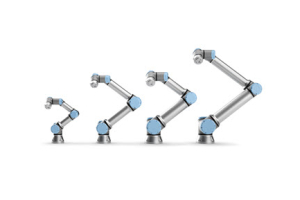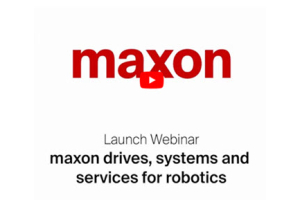Gearing products (components or housed gearboxes) are mechanical devices used to increase the output torque or change the speed (RPM) of a motor. They are also used for inertia matching between a load and a motor. The most common type of gearing product is a gearbox (or housed gearhead).
 Most gearboxes are constructed from steel materials such as iron, aluminum and brass, however spur gearboxes can also be made with plastics such as polycarbonate or nylon. The orientation of the gear teeth plays a major role in the overall efficiency, torque and speed of the system. Straight gear teeth gearboxes are typically used in low-speed applications. These gearboxes can be noisy, and usually have lower overall efficiency. Helical gearboxes are typically used in high-speed applications. These gearboxes are quieter in operation than straight gear teeth gearboxes and usually have improved overall efficiency. In very low noise applications, ceramic gears can be used to replace metal gears.
Most gearboxes are constructed from steel materials such as iron, aluminum and brass, however spur gearboxes can also be made with plastics such as polycarbonate or nylon. The orientation of the gear teeth plays a major role in the overall efficiency, torque and speed of the system. Straight gear teeth gearboxes are typically used in low-speed applications. These gearboxes can be noisy, and usually have lower overall efficiency. Helical gearboxes are typically used in high-speed applications. These gearboxes are quieter in operation than straight gear teeth gearboxes and usually have improved overall efficiency. In very low noise applications, ceramic gears can be used to replace metal gears.
Gearboxes come in a variety of types: Planetary, Harmonic Drive, Bevel, Helical, Spur, Cycloidal, etc.
Planetary Gearboxes are constructed with a sun gear, ring gear and planetary gears. The sun gear is the central gear which is fixed in the center, ring gear (annulus ring) which is the outer ring with inward-facing teeth, and the planetary gears which rotate around the sun gears and mesh with both the sun and ring gear. Planetary gearboxes are used in applications requiring low backlash, compact size, high efficiency, resistance to shock, and a high torque to weight ratio.
Advantages of Planetary Gears include:
- High power density
- Compact design
- High efficiency
- High permissible input speed
Disadvantages of Planetary Gears include:
- Cost
- Complex design
Harmonic Drive Gearboxes feature precision strain wave gearing which provides zero backlash, high torque, compact size, and excellent positional accuracy. Harmonic drive gearing is made up of three parts:
Circular Spline – a solid, thick walled ring with internal teeth.
Flexspline – a thin walled, flexible steel cylinder with external teeth machined on the outside. It is slightly smaller than the circular spline. The number of teeth on the flexspline is less than the number of teeth on the circular spline (generally 1 to 2 fewer teeth).
Wave Generator – is an elliptical cam enclosed in a bearing assembly.
When inserted within the flexspline, the wave generator transfers its elliptical shape leading to the engagement of the external teeth of the flexspline with the internal teeth of the circular spline at two points between the flexspline and the circular spline. The constant tooth contact achieved by having the teeth mesh at two different points allows the Harmonic Drive Gearbox to achieve zero backlash.
Advantages of Harmonic Drive Gears include:
- High power density
- Extremely compact design
- Zero backlash
- High torsional stiffness
Disadvantages of Planetary Gears include:
- Cost
- Complex design
Bevel Gearboxes include either straight or spiral teeth gears. Straight bevel gears have straight and tapered teeth and are used in applications requiring slow speeds. Spiral bevel gears have curved and oblique teeth and are used in applications requiring high-performance, high speed applications. Bevel gearboxes are mainly used in right angle applications with the shafts in a perpendicular arrangement.
Advantages of Bevel Gears include:
- Right angle configuration
- Durable
Disadvantages of Bevel Gears include:
- Axes must be able to support forces
- Potential excessive vibration and noise during operation
Helical Gearboxes feature gears that are cut at angles which allow for the gradual contact between each of the helical gear teeth. This construction provides smooth and quiet operation. Gearboxes using helical gears are used in high horsepower and high efficiency applications. Helical gears are often incorporated into planetary gearbox designs.
Advantages of Helical Gears include:
- Inline or right angle configurations
- Smooth and quiet operation
- High efficiency
- High horsepower
- Low backlash
Disadvantages of Helical Gears include:
- Resultant thrust along axis of gear
- Cost
Spur Gearboxes are made with straight teeth mounted on a parallel shaft. The noise level of spur gears is relatively high due to colliding teeth of the gears which make spur gear teeth prone to excessive wear.
Advantages of Spur Gears include:
- Cost-effective
- High gear ratios permissible
- Compact design
Disadvantages of Spur Gears include:
- Noisy
- Prone to wear
Cycloidal (planocentric) Gearboxes employ eccentric motion to achieve its speed reduction. It uses noncircular or eccentric motion to convert input rotation into a wobbly cycloidal motion. This motion is then converted back into a circular output rotation. During this process, speed reduction occurs. Unlike Harmonic drives, which employ a flexible cylinder that doesn’t move in its entirety but stretches to mesh with the internal circular spline gear to achieve a type of cycloidal motion, the cycloidal (planocentric) drives will actually move the entire internal gear in an eccentric motion.
Advantages of Cycloidal Gears include:
- High efficiency
- Extremely high torque output
- Low backlash
Disadvantages of Cycloidal Gears include:
- Cost
- Can generate velocity and torque ripple
Search our Gearing Products by subcategory:





